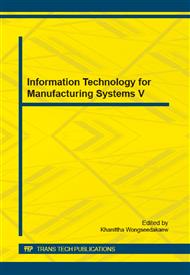p.388
p.397
p.402
p.407
p.412
p.417
p.423
p.429
p.434
An Analysis of Large-Scale Wireless Sensor Networks with Energy-Saving Problem
Abstract:
Energy saving is the nature of the optimal balance between the optimization of performance and energy consumption. Due to the node's mobility of large-scale wireless sensor networks and the depletion of electrical energy causing the failure of communication path and network segmentation mong nodes, and because energy consumption of nodes is mainly its communication, to design the routing with energy saving, low latency, extensibility and improving the fault-tolerance is particularly important. Based on the large-scale wireless sensor networks, mainly through introducing the methods of nonlinear modeling, this paper analyzes the fine-grained mapping between the system of energy consumption and software, builds and optimizes the software model of energy consumption and energy consumption-balance model of service quality, and commits to form an effective energy saving to lay a foundation for construction of low energy consumption of wireless sensor network. Research achievement has significant theoretical and application value in public safety, disaster prevention, ecological and environmental protection, urban management, smart home, intelligent transportation, medical and health care, industrial monitoring, green agriculture and other fields.
Info:
Periodical:
Pages:
412-416
Citation:
Online since:
October 2014
Authors:
Price:
Сopyright:
© 2014 Trans Tech Publications Ltd. All Rights Reserved
Share:
Citation:


